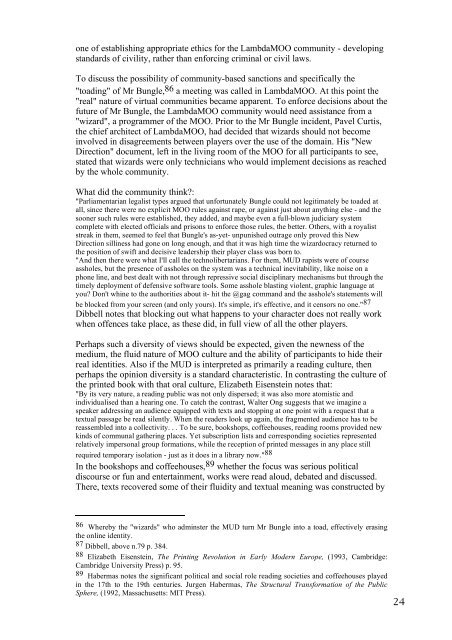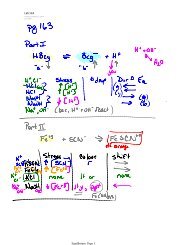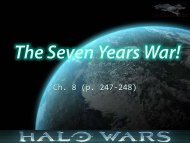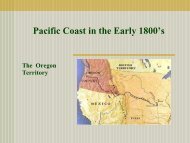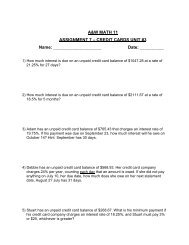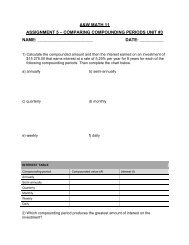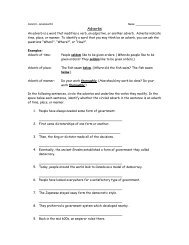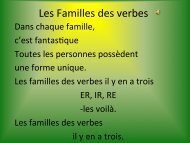ETHICAL BOUNDARIES AND INTERNET CULTURES
ETHICAL BOUNDARIES AND INTERNET CULTURES
ETHICAL BOUNDARIES AND INTERNET CULTURES
You also want an ePaper? Increase the reach of your titles
YUMPU automatically turns print PDFs into web optimized ePapers that Google loves.
one of establishing appropriate ethics for the LambdaMOO community - developing<br />
standards of civility, rather than enforcing criminal or civil laws.<br />
To discuss the possibility of community-based sanctions and specifically the<br />
"toading" of Mr Bungle, 86 a meeting was called in LambdaMOO. At this point the<br />
"real" nature of virtual communities became apparent. To enforce decisions about the<br />
future of Mr Bungle, the LambdaMOO community would need assistance from a<br />
"wizard", a programmer of the MOO. Prior to the Mr Bungle incident, Pavel Curtis,<br />
the chief architect of LambdaMOO, had decided that wizards should not become<br />
involved in disagreements between players over the use of the domain. His "New<br />
Direction" document, left in the living room of the MOO for all participants to see,<br />
stated that wizards were only technicians who would implement decisions as reached<br />
by the whole community.<br />
What did the community think?:<br />
"Parliamentarian legalist types argued that unfortunately Bungle could not legitimately be toaded at<br />
all, since there were no explicit MOO rules against rape, or against just about anything else - and the<br />
sooner such rules were established, they added, and maybe even a full-blown judiciary system<br />
complete with elected officials and prisons to enforce those rules, the better. Others, with a royalist<br />
streak in them, seemed to feel that Bungle's as-yet- unpunished outrage only proved this New<br />
Direction silliness had gone on long enough, and that it was high time the wizardocracy returned to<br />
the position of swift and decisive leadership their player class was born to.<br />
"And then there were what I'll call the technolibertarians. For them, MUD rapists were of course<br />
assholes, but the presence of assholes on the system was a technical inevitability, like noise on a<br />
phone line, and best dealt with not through repressive social disciplinary mechanisms but through the<br />
timely deployment of defensive software tools. Some asshole blasting violent, graphic language at<br />
you? Don't whine to the authorities about it- hit the @gag command and the asshole's statements will<br />
be blocked from your screen (and only yours). It's simple, it's effective, and it censors no one." 87<br />
Dibbell notes that blocking out what happens to your character does not really work<br />
when offences take place, as these did, in full view of all the other players.<br />
Perhaps such a diversity of views should be expected, given the newness of the<br />
medium, the fluid nature of MOO culture and the ability of participants to hide their<br />
real identities. Also if the MUD is interpreted as primarily a reading culture, then<br />
perhaps the opinion diversity is a standard characteristic. In contrasting the culture of<br />
the printed book with that oral culture, Elizabeth Eisenstein notes that:<br />
"By its very nature, a reading public was not only dispersed; it was also more atomistic and<br />
individualised than a hearing one. To catch the contrast, Walter Ong suggests that we imagine a<br />
speaker addressing an audience equipped with texts and stopping at one point with a request that a<br />
textual passage be read silently. When the readers look up again, the fragmented audience has to be<br />
reassembled into a collectivity. . . To be sure, bookshops, coffeehouses, reading rooms provided new<br />
kinds of communal gathering places. Yet subscription lists and corresponding societies represented<br />
relatively impersonal group formations, while the reception of printed messages in any place still<br />
required temporary isolation - just as it does in a library now." 88<br />
In the bookshops and coffeehouses, 89 whether the focus was serious political<br />
discourse or fun and entertainment, works were read aloud, debated and discussed.<br />
There, texts recovered some of their fluidity and textual meaning was constructed by<br />
86 Whereby the "wizards" who adminster the MUD turn Mr Bungle into a toad, effectively erasing<br />
the online identity.<br />
87 Dibbell, above n.79 p. 384.<br />
88 Elizabeth Eisenstein, The Printing Revolution in Early Modern Europe, (1993, Cambridge:<br />
Cambridge University Press) p. 95.<br />
89 Habermas notes the significant political and social role reading societies and coffeehouses played<br />
in the 17th to the 19th centuries. Jurgen Habermas, The Structural Transformation of the Public<br />
Sphere, (1992, Massachusetts: MIT Press).<br />
24


